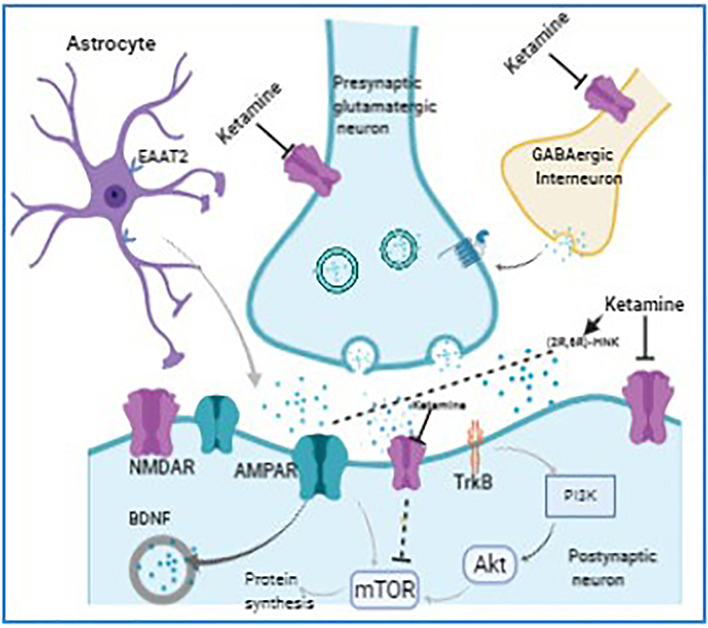Fig. 1.
Possible mechanisms of action of ketamine. Mechanistically, acute blockade of NMDA receptors by ketamine causes an activation of AMPA receptors, which then modulates downstream signaling systems in the limbic system to mediate antidepressant effects. The downstream actions of AMPA receptors activation leads to increase in brain-derived neurotrophic factor (BDNF) levels and activation of its receptor tropomyosin receptor kinase B (TrkB). In addition, AMPA receptors stimulate mammalian target of rapamycin (mTOR) pathway, deactivation of glycogen synthase kinase 3 (GSK-3), and inhibition of the eukaryotic elongation factor 2 (eEF2) kinase phosphorylation.

